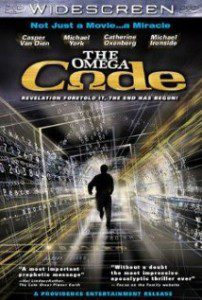 The always brilliant Darren Franich had a new article up at Entertainment Weekly over the weekend, in which he took a look at the movies of 1999 — once dubbed “the year that changed movies” by his bosses — and asked how well those films have stood the test of time.
The always brilliant Darren Franich had a new article up at Entertainment Weekly over the weekend, in which he took a look at the movies of 1999 — once dubbed “the year that changed movies” by his bosses — and asked how well those films have stood the test of time.
That was the year when everyone thought The Matrix would take the place of Star Wars as a sci-fi myth for our times. That was the year when The Blair Witch Project invented the found-footage horror subgenre and proved the value of viral marketing campaigns. That was the year when young, hip directors like David Fincher, David O. Russell and Spike Jonze produced instant cult hits like Fight Club, Three Kings and Being John Malkovich, all of which came out in October of that year. And so on.
But there was another game-changer released in October 1999 that Franich doesn’t mention — a movie that may be pretty silly but still set a new precedent.
I refer, of course, to The Omega Code, an end-times thriller starring Michael York — then between Austin Powers sequels — as the Antichrist. The film, which marks its 15th anniversary this week, stunned everyone when it first came out by cracking the weekly top-ten list despite playing in only 304 theatres.
Christians, at that point, had been making low-budget movies and watching them in church basements and on home video for decades. But The Omega Code was probably the first independent Christian film to land a spot on the charts alongside such mainstream films. To some people, it felt like Christian films had arrived.
The earliest attempts to capitalize on the success of The Omega Code fizzled: the sequel Megiddo: The Omega Code 2 flopped when it came out in 2001, as did the first big-screen version of Left Behind, which was also an end-times movie.
Even so, the success of The Omega Code had proved that there was what we now call a “faith-based” audience ready to be tapped. Organizations like Grace Hill Media, which was created in 2000, sprang up to promote mainstream films such as Harry Potter and the Philosopher’s Stone to church-based audiences. And then The Passion of the Christ came out in February 2004 and kicked things up to a whole new level.
Fifteen years after The Omega Code came out, we are now living in “the year of the religious movie”. The Omega Code grossed $12.6 million in its day — easily a record at the time for a Christian indie — and now God’s Not Dead has surpassed that, with a whopping $60.8 million. We’ve reached the point where if a Christian film like Moms’ Night Out grosses $10.4 million, it’s considered a box-office disappointment.
The mainstreaming of Christian film over the past 15 years has been a mixed blessing at best. As with the Christian music industry, so here: there’s a lot of embarrassingly derivative crap out there, and the very lucrativeness of the market encourages filmmakers to pander to their audience instead of broadening its horizons.
But the existence of this niche may also allow some artists to express themselves in ways that might not have been feasible otherwise. And there’s nothing wrong with films that are made with genuine ministry, rather than propaganda, in mind.
As I’ve said before, niches are good; it’s ghettos that are bad.
I couldn’t say how The Omega Code itself — which tapped into the Bible code fad of the late 1990s — has “aged” over the years. I haven’t watched the film since it was fairly new, and I have little interest in revisiting it right now. But someone has posted the film to YouTube, so if you want to check it out for yourself, here it is:
http://www.youtube.com/watch?v=CazP74nbr6Y
And here, for good measure, is the sequel:
P.S.: Other Christian films that have cracked the top ten in the fifteen years since The Omega Code came out include:
- Jonah: A VeggieTales Movie (2002) — opened at #6 — spent 3 of its first 4 weeks in the top ten
- End of the Spear (2006) — opened at #8
- One Night with the King (2006) — opened at #9
- The Pirates Who Don’t Do Anything (2008) — opened at #9
- Expelled: No Intelligence Allowed (2008) — opened at #10
- Fireproof (2008) — opened at #4 — spent 3 weeks in the top ten
- Letters to God (2010) — opened at #10
- Courageous (2011) — opened at #4 — spent 4 of its first 5 weeks in the top ten
- God’s Not Dead (2014) — opened at #4 — spent 5 of its first 7 weeks in the top ten
- Moms’ Night Out (2014) — opened at #7 — spent 2 weeks in the top ten
- Left Behind (2014) — opened at #6 — spent 2 weeks in the top ten












